-
Posts
1,412 -
Joined
-
Last visited
Content Type
Forums
Detector Prospector Home
Detector Database
Downloads
Posts posted by Northeast
-
-
5 hours ago, jasong said:
in case EMI renders an entire trip pointless like today.
Do you take the DD with you? Although a bit heavier and awkward it works well re: EMI.
A 6x10” DD in the ATV will be perfect for just the situation you describe.
-
22 hours ago, rvpopeye said:
VERY nice lookin' chunksa.yellow .......🤗
Thanks RV.
11 hours ago, Gerry in Idaho said:Well done and thanks for sharing.
Thanks Gerry. Your posts and pics are great encouragement for everyone too, so thank you 👍 I also follow you on FaceBook and although I only look at it every few days, yours tends to be at the top of my feed for some reason 🙃
6 hours ago, mn90403 said:Congratulations on that trip
Thanks Mitchel, I appreciate that. I'm looking forward to the day I can get shown how to scan the beaches of Santa Monica for some rare treasures...and then maybe we can go metal detecting 🤣
Re: selling the nuggets. I am torn a bit in what to do with this. I'll likely keep a couple of nice ones and sell the rest. I have a few other toys that I'll need to fund in the future and unfortunately my real wages are generally depleted with a mortgage, a wife and 3 teenage kids! But as we know, they are another type of gold.
4 hours ago, jasong said:Those gold pictures are great, is that done with a scanner?
Thanks jasong. Nothing special re: the pics. My eldest son has an iphone 13 pro (I think that's what it is) and it has the funky 3 camera thing on the back. The gold was simply sat on some of those small display boxes with the black material, I shone my iphone light on instead of using his flash and he took them with the iphone macro setting. My brother in law has one of those USB camera lense things that take some real micro photography. I forgot to look at them when I was there but he said they come up a real treat. A few of the blokes on Prospecting Australia have put up some wild pics over the years too. Some of the tiniest nuggets when viewed without something to size them against could easily be mistaken for multi ounce pieces when you see the fine detail on their surface.
-
Thanks to everyone for the kind comments and encouragement. I mostly wrote this up as a bit of a record for myself to look back on but also as a bit of encouragement for others that 'it is still out there'. There are a lot of skunk days back here in Victoria and although W.A. is very different, it gives me confidence that I can adapt a few more things that I learnt on this trip and hopefully find my own little Victorian virgin patch.
I love reading JR and Reg's adventures as they continue to do that on an even grander scale. It gives hope when hope might be starting to wane.
On 6/26/2022 at 12:18 AM, vanursepaul said:im still waiting on my visa to come thru…. 28 days and counting..
That's a bummer Paul. Hope that it comes through for you soon. Some of the ground we were on was actually adjacent to some of Trent's tenements. Would have been good to meet Trent and see how they run their ops but obviously had no idea on which tenement he would be or where on them he might be working - big area. Would have been a double bonus if we could have crossed paths!
On 6/26/2022 at 2:48 PM, Valens Legacy said:Some day I have to visit that part of the world
Life is short - get out there 😀
On 6/26/2022 at 7:11 PM, geof_junk said:The concentrations of nuggets are fairly close together, most of my GPS nugget spreads have a distance of more than 20 meters apart
Thanks Geof. Yes, both the little patches I found were very concentrated. However, the larger patch that Bill found last year was a much larger area although it appeared to be almost 3 patches adjoining each other. The main area was about 130 metres X about 40 metres with mostly rounded nuggets between 0.1 of a gram up to nearly 9 ounces, although elluvial rather than alluvial. Right in the middle of that was where I found the really reefy 16 gram piece. Then, about 60 metres off to the side was a solitary 16 gram, deep piece found last year. And on a small plateau about 50 metres to the west there was multiple 0.5 gram to multi gram pieces that were quite reefy. All of it close but a lot of it not seemingly related at all.
The Trilobite app was very, very useful. There are multiple videos re: how to get the best out of it and the developer is very responsive to answering questions that you might have. I am not associated with the app/developer in any way but am a very happy end user 😉
-
2 hours ago, zdsdead said:
I'm out for my first hunt tomorrow
Best of luck for the hunt.
Although I mainly chase gold, I also have an Equinox and look for a few coins and some jewellery.
Australia may have better gold options than the UK but you guys certainly have an amazing chance at some ancient artefacts 👍 -
16 hours ago, lowtone said:
Hi ,Has anyone heard if there is going to be another update for the Equinox?
Not that I've heard lowtone. Would likely only see another update if there was a bug to fix.
-
On 6/22/2022 at 8:31 AM, zdsdead said:
At the end of July, harvest time, begins, and the hunt for hammered coinage, really takes off. My first trip out this sunday, will be on well detected grass land,
Hi zdsdead.
Interesting to be using a non-discriminating, deep machine. Interested in what your plan of attack is. Do you just hunt deep signals or dig everything?
The reason I ask is that that it might make a difference to the best settings choices.
I never used the GPZ for coins so can't help much re: settings for them specifically. I would perhaps stay away from High Yield though as you will be picking up every tiny piece of metal.
General/Difficult perhaps to target those deeper signals? Turn the coil on its side when you do get a signal and if it can't be heard then maybe it is a deeper piece?
Be interesting to hear how you go.
Cheers, N.E.
-
My total.
My biggest piece.
Some of the really flat bits.
Concentration of bits of my first little patch.
And the second, bigger patch. The black circles where Bill got the majority of his pieces.
The bloody flies! And this is apparently when they aren't very prevalent 😳
Old drill bags. Apparently 1 bag per metre of drill. They take a small sample from each bag, have it assayed and can return to take further samples if required. Obviously, these are quite old as the bags have broken down quite a bit.
-
Apologies but this is long! I seriously contemplated something like Klunkers 1000 word essay! 🤣
After 4 re-scheduled attempts last year that were all thwarted for travel restriction reasons, the W.A trip finally happened earlier this month.
The trip was with my brother-in-law (we’ll call him Bill (for Brother-In-Law)) who lives in Perth and has been doing some prospecting himself over the past 2-3 years for some decent success.
Flew from Melbourne to Perth, stayed one night at Bill’s place and then left at sparrow’s fart for the 9 hour drive to a super secret location somewhere near Meekatharra.
The plan was to prospect 2 locations for a few days where his research suggested there might be some detectable gold and then, depending on success or otherwise, move down to his ‘patch’ where he has had most of his success. He found his patch earlier last year and over the past 12 months he and and a few friends in Perth had gathered nearly 500 grams of gold from it. Biggest piece being just shy of 9 ounces.
Bill had organised access to stations, access to some live tenements via agreements and access to some pending ground. All up, we had about 5 rough locations that we were able to hunt and he knew would keep us busy for the 10 days we were out and about. Very thankful to Bill for organising everything as the W.A. system is a little complex for a newbie running a fly in/fly out, hit and run mission.
All tenements and areas that we were allowed to utilise were loaded into the Trilobite Solutions Geology Travel maps and this would prove invaluable over the next 10 days making sure I stayed where I was supposed to be, logging prospecting walks that we did, logging finds, logging dry blow piles, etc. It is a great little app (for Australia and Canada).
After a smooth run on both black top and good dirt roads we rolled into what was to be the first night’s camp at about 4 p.m. The camper trailer and swag were set out and the detectors were fired up. After such a lengthy build up to the trip we were finally into it!
Bill wandered reasonably close to camp and I wandered a little further off. After 45 mins or so and a few short bursts of detecting I found my first little bit of W.A. gold. Easily a sub-grammer but it was a start - and day 1 was not a skunk! Couldn’t find anything more in a close area around that first piece and headed back to where Bill was as it was getting close to dark. He had found 2 small pieces and had another 3 signals marked for me to check with the 6000 (he was running a 7000 with stock 14” coil). I could hear 2 signals and felt the other was ground noise. He dug them up - 1 gold, 1 trash and 1 ground signal.
Bill went off to start a fire and said for me to have another quick look around close to camp before it was really dark. Headed 30 metres west of where we had chatted and found a signal just down slope of an iron stone band. Another sub-gram piece of gold. Again, nothing more in a close area around it and started heading back to camp. On the uphill side of the iron stone got another signal - another sub-gram piece. This was quickly followed by 4 more sub-gram pieces and a signal left in the ground as now it was proper dark. Considering we arrived at this spot not knowing if we would find anything, it was a welcome start.
Day 2 was, as all of them were, a start before sunrise. Straight back to the signal that was left un-dug the night before - gold. And day 2 was not a skunk! Bill left me to it and headed south from camp as my little patch turned into an approx 21 gram day for me. All little bits but the first 24 hours pretty much had my trip cost covered - everything from here on in was pure cream!
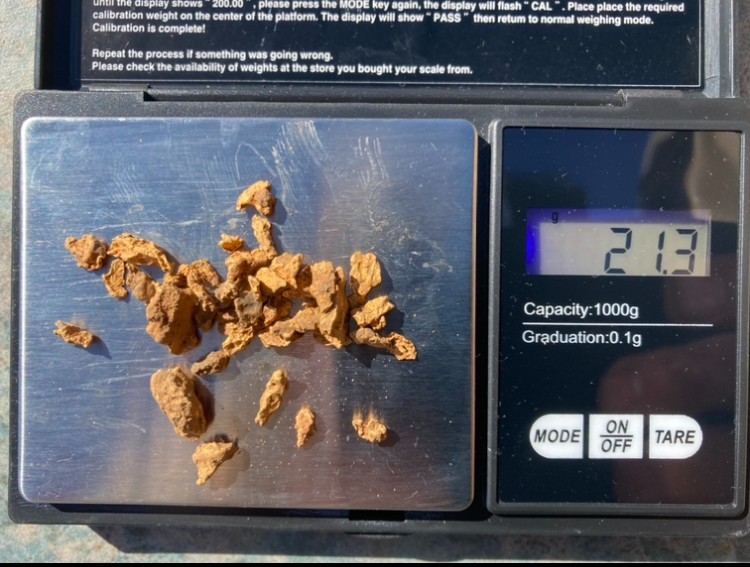
Bill had also found himself a little patch with larger pieces but a lower total weight. I think about 7 grams was his biggest bit and total weight was approx 16 grams. Bill even ran the 19” coil on the GPZ 7000 over this area as it was flat and open but he could not eke out anything further.
Day 3 saw a final clean-up of my little patch for a few grams (and day 3 was not a skunk!) and then several kilometres of walking, detecting, searching for new ground. We walked separately but the end result was zero.
Bill had felt that if we were to find anything at that particular location it would have been quite concentrated - and he was right! Both small patches were barely 40 metres from camp.
About mid-afternoon we felt the area had played out and we would be best served to head to the next prospect, set camp, have a quick search and then have a proper look the following day. The day ended with a new camp ground, no gold from a quick 30 minute look and a nice meal around the fire.
Day 4 was a big day of walking. Again we targeted a concentrated area to begin with but when this proved fruitless the search was markedly widened. I headed east several kilometres and Bill headed north. The country is mostly devoid of low ground cover with the main vegetation being low shrubs and the occasional larger but stunted tree. It is a harsh environment of black rocks, red dirt, some areas littered with quartz and very, very little water.
Something that amazed me for the whole trip were the dry blow piles that are assumed to be around 100-120 years old. They are barely noticeable in some areas due to their age but once Bill had shown me what to look for they were easier to spy. The sheer number of piles over a vast area is testament to the hard work those old boys did in such a harsh environment.
Unfortunately location number 2 proved completely barren for any detectable yellow and we made the decision to cut the losses and move to ‘the patch’ that I had heard so much about. I guess sometimes it is hard to stay away from an area that has provided some good colour in the recent past.
A couple of hours before dark allowed a little look around at where previous pieces were found, the lie of the land, a quick detect and the formulation of a plan for tomorrow. The evening detect found a couple of small sub-grammers for me and 2 just over a gram for Bill. Day 4 - no skunk!
Day 5 saw Bill head north and myself head east for what was probably my biggest walking day. The plan was to spend the morning prospecting and if no success, to spend the afternoon around the ‘patch’ trying to avoid a dot day. Saw some good ground with the type of geology we were looking for. At likely areas I would set the detector and zig-zag slowly across and up a slope and sometimes check a small drainage or two. Very, very little rubbish in these areas which is a pleasant change to the usual Victorian rubbish areas. But on that day, also no prospecting gold.
For all of the prospecting and some of the cleaning up thus far into the trip, the 17” had been the main choice of coil for the GPX 6000. It provided great area coverage when out prospecting and also allowed a decent area to be covered when going over old ground, with the hope of a deeper piece than the 11 might provide - although I am not sure if the depth advantage is that great.
The afternoon again saw some hunting around the patch and a few small pieces coming from under bushes that hadn’t been searched quite so well or were just outside of the intensely searched area. Most under a gram but a few sneaking over. Later in the day I decided to put the 11” coil on to finish the day with a lighter machine and really scrub out an area in the middle of Bill’s patch. The plan was to see if there were pieces the 7000 had simply missed due to the different technology and coil sizes. A few small pieces popped their head above the threshold noise but honestly, not as many as I had thought. The move to the 11” coil also dulled out most of the conductive ground signal that had been coming through on the 17”. It wasn’t terrible with the 17” but the smaller coil certainly improved things. And day 5 was not a skunk 🙂
Day 6 brought about a different plan. I chose to finish off the scrubbing area that I started the evening before and Bill hooked up the 19” coil to look for some deeper nuggets and play with some settings. One was more successful than the other!
Covering an area of approx 10 X 20 metres really thoroughly with the 11” I had marked 4 targets that were all soft. I felt 1 was probably ground noise but the others seemed like definite signals, although quiet. By this time Bill had ditched the 19’ coil due to no joy and came across to check my targets with the 14”. Bill really felt that he had scrounged every piece of gold out of his patch that the GPZ 7000 was capable of finding so he was keen to cross reference any targets that the GPX 6000 found.
Bill felt the same as myself - 1 X ground noise, 2 X targets (very soft) and 1 that he could not hear at all. The 2 that he felt were likely targets were very soft and the area over the signals had just had the layer of small iron stones and quartz brushed off it - probably allowed his coil to be 1/2 an inch closer to the target than mine had been when first heard.
Target 1 - ground noise.
Target 2 and 3 - small pieces of gold.
Target 4 - you beauty! This was a target that Bill’s GPZ could just hear and after taking 3-4 inches off it brightened with the GPX 6000. Another few inches and it brightened again. Was surprised that we had not actually dug the target out at this stage as it very much sounded like a small, shallow target on first detection. Another few inches and the detector was starting to really ramp up and we knew we were onto something decent.
At over a foot deep the GPX 6000 was screaming in the hole and we moved to the Profind 35 and a little more delicate pick work and a broader area of excavation. Slowly, slowly dirt was removed and a final clump of ‘Kinder Surprise’ was removed from the hole. Bill broke it all up carefully and popped out the roughest, prickliest little personal best piece of gold that I have seen.
A bit over 16 grams once properly cleaned at home and a few days in acid.
A quick check of the hole revealed a further target which ended up being another very prickly but much smaller piece.
Bill was excited by the really prickly nature of the pieces and was wondering what else might be in the vicinity, either slightly out from those pieces or slightly deeper. With some fairly decent enthusiasm he started to excavate an area approx 6 feet across and about 1.5 feet deep. The funny thing about this area is that it is not the real, hard pack ground that you might expect. It is actually reasonably soft digging once through the first inch or so with lots of rocks amongst soft, fine, red dirt. A swing around in the excavated hole provided a grand response of…zero targets.
Bill is going to mull over that prickly piece and his whole patch for quite some time. He is thinking a dry blower might be useful but this requires a new type of application through the mines dept which may just not be worth it.
The days start to blend a bit at this point but I think the day was finished with scrubbing and very little further gold. Oh well, it was still memorable for what ended up being the biggest and most unusual piece of the trip.
Day 7 will be remembered for a long time to come…
The day started with a combined walk south from camp to an area that had some adjoining rock structures that we thought was worth a look. About a kilometre from camp we split up with Bill wandering off a little further and myself starting at a small drainage. Moving about 20 metres downstream from where we had split, the GPX 6000 was fired up with the 17” attached, a step was taken and…bbeeeeeooooWWWWW. “Must be rubbish” I thought to myself as I scraped a few loose upper level rocks from the wash. Checked again and it hadn’t moved, scraped a few more inches and the target was moved. Definitely rubbish. Except that it wasn’t! 😀 A nice, solid, golden little ‘colour’ with some iron stone inclusions. Maybe 5 grams. “Hey Bill! You still nearby?” Well, Bill had moved off a little and with headphones on he only just heard me. Perhaps it would have been better if he hadn’t? 🤔 🤣
“What’s up?” was the reply. “You better come back here”.
Bill came back expectantly and I showed him the prize. You beauty!
We made a game plan of him moving upstream in the wash far enough that the detectors wouldn’t interfere with each other - maybe 25 metres. As he briskly took off I put the approx 5 gram piece (ended up just over 6 when weighed) in the keeper bottle, grabbed the GPX turned to start detecting and…bbeeeeeoooWWWWW. What the…? Another piece of gold! This time a larger surface area but really thin piece - about 2 grams. Bill’s readying up got a little quicker. Gold in the bottle, grabbed the detector moved 1 step…yep, you guessed it, gold!!
Well, suffice to say that the next hour or so was a blur of digging targets, moving wider to try and get an idea of the area to be worked and stopping frequently to dig another target.
Somewhere in that hour Bill dug his largest target for the trip - a 14 gram reefy bit with a nice solid backbone. Also during this time some idiot (currently typing a trip report) made a dumb comment in excitement of something like “We’ve got 4 days to clean up this patch”. Well, in 24 hours the smoke had cleared and we holstered our weapons. The patch was beaten. 55 grams was the total from an area of about 30 metres X 50 metres. The odd thing was that many pieces were reefy and were found really close to each other and most were about 5 metres out of the wash. The others were quite rounded and found in that 5-50 metre range from the reefy bits. We assume a large column of reef, broken down in stages with the earlier shed pieces moving a little and the later shed pieces having moved very, very little. And the reefy pieces were thin, really thin and like nothing that Bill has seen in that area before.
So, the new patch took us through until about lunchtime on day 8, we scouted out for about another kilometre, detecting as we went but could not find ground that looked right or that brought up a target. It also took us to the limits of the tenement that we were allowed on.
Bill had some other spots he wanted to try on the way home so we made the decision to pack up camp and hit the road. Moving a few hours further south would also cut some time off the final return trip to Perth. A full 9 hour trip and the end of some long days was not something either of us wanted.
I can make the last bit short. Some further scouting at a location about an hour south proved fruitless and further detecting and an overnight camp another hour south only showed up 1 small piece on an area that Bill had previously found some multi gram pieces. About 4 p.m. on our last day the sky looked a little ominous and the last thing we wanted to do was pack up a wet camp in the morning. It meant that we probably lost 3-4 hours of detecting in the morn but we packed up camp and high-tailed it back to Perth, arriving just shy of midnight.
With a total of 78 grams for me for the trip I was super happy. My goal had been to at least pay for the trip and that was covered many times over. Bill got 46 grams for his troubles. His goal for each of his trips is 5 grams per day. The distance he has to cover, time away from family, etc, means that he really sets a decent goal to make his trips worthwhile and well and truly pay for themselves as well. Being able to halve fuel costs with another person makes covering trip costs that little bit easier.
A huge thank you has to go to my brother-in-law. Without his vehicle, knowledge of the areas we went, research he had put in prior to the trip, preparation with food, provision of bedding/sat phone/camp kitchen/EPIRB, etc, etc, etc, the trip would either have simply not been possible or at least would have been much, much more of a headache for me. And also not likely anywhere near as successful.
Planning has most definitely started for next year 😀
-
I was thinking the one on the link here - https://www.facebook.com/groups/169895138373510/permalink/413800703982951/
Or is that lump from this thread but all cleaned up?
-
@jrbeatty and @Reg Wilson - is there another nice 'colour' that needs to be added to the thread? Saw something on P.A.
-
5 hours ago, phrunt said:
The DD's vastly improve the 6000's EMI handling though
Not just EMI. I have never had the delight of really dealing with bad 'conductive ground' until recently in W.A (report and pics when I get a chance). Wee-waa on every swing of the 17" coil and although it was usable, it was not pleasant. Lifting the coil up to waist height it squealed with displeasure. Tried the 11" coil and it improved and I remember people talking about a smaller coil dealing with conductive ground better as it isn't swamped but the signal (I think that is correct?).
Thought I would try the 14" in Conductive Ground Cancel mode and hey presto! it was silent with regard to the wee-waa's. Still picked up the hot rocks, gold, etc, but made it much more pleasant to use.
Have pretty much no interest in the 6 monos from the aftermarket guys at this stage as the 11" and the 17" cover my mono needs well. However, a Sadie sized/shaped, or slightly larger, DD would be top of the purchase list for me.
-
2 hours ago, Jonathan Porter said:
AFAIK there will be aftermarket NF DD coils for the 6000 at some stage in the future based on conversations I have had
That is appreciated JP 🙏
-
2 hours ago, Jonathan Porter said:
yes there have been issues but those issues are being addressed.
That is good to hear, thanks JP.
I am happy to put myself out there as someone who believes in the ability of the GPX6000. I’m also happy to see your passion and support for a product that you helped develop. I’m sure your and Steve’s input has made it the machine it is. I will also put myself out there as a customer of JP. I feel his input to this forum in particular deserves some reward and this is a way that I can give something back to someone I feel has provided good advice over the years.
I’m also happy to put myself out there as a Codan shareholder - of recent times but not at the current price unfortunately 🤣
As a shareholder, it is certainly disturbing to see threads about quality control plastered over forums, although I am not sure that forum content is having much impact on share price.
JP, I am one of those that is wondering (and trying not to voice an uneducated opinion) about the aftermarket coils for the GPX6000.
It would be great if some simple questions could be answered but understand if legalities do not allow. Perhaps Coiltech, Nugget Finder, x coils or even Minelab could pop up and answer some of these?
- are small double d coils possible and are there any in development/testing? I don’t see any need to keep this a secret as we assume they are but currently just offer uneducated guesses. A coil manufacturer can always say “Yep, we tried but it just wasn’t doable”. I don’t see the issue with that 🤷🏼♂️
- what is making these coils so expensive compared to previous GPX coils? It has been stated here that the specs are the same or very similar. Perhaps that incorrect? Is it the chip? The licence charge by Minelab? Simply that it is the new flavour and a little more margin can be asked? I know nobody will want to answer that 🤓
JP - you also mentioned there are some other GPZ7000 coils in the wings - is anybody able to provide some guidance on sizing? Bigger? Smaller? I no longer have a Z but 2 mates do.
I understand that maybe not much can be said. Again though, I don’t see the issue in a manufacturer saying “we are trying something”. They can always say it didn’t work out.
And Minelab!! For Pete’s sake, appoint someone as a communications spokesperson! People are more forgiving if they aren’t treated like mushrooms.
Jasong - sorry if this hijacks your thread. Maybe it should be moved elsewhere, Steve?
Cheers, N.E.
-
Mmmmm, I started to feel a rant coming on but until all the facts are known I'll stand down.
Be certainly nice to know where the huge mark-up is coming from if the specs are essentially identical.
-
11 hours ago, Aureous said:
current 6000 coils are the same specs as the old GPX coils.
Which makes me wonder even more, why are the new ones double the price?
-
1 hour ago, Aureous said:
Australian NF Xceed6 pricing
The 8X6 Sadie for all other GPX units is Aus $295.
The 8.5X6 for the GPX6000 is Aus $609.
Over double the price. Surely that is taking the piss? It is not because the old Sadie is bundle wound and the new one might be flat wound, because even a flat wound 12X8 is only $460.
Genuine question - does a chip really cost that much?
Or, genuine question - do Minelab have their hand out asking for a cut of the sales because the coils are 'authorised by Minelab' and the coil manufacturers have had to bump prices significantly to pay for the privilege?
-
Some people do it bloody tough don't they 😔
-
1 hour ago, Gold Catcher said:
Thanks also for the customer care info.
Just on that. I've only had 1 dealing with Avantree support (via email) and they were excellent. Polite, helpful, informative.
-
Unfortunately not near any beaches Mitchel, but have experienced the more positive side of La Nina to the US has been getting. Our summer here in Northeast Vic has been the wettest I can remember. Green right through Feb/March which are usually very hot and dry. I don't think we had a single day over 40 degrees celcius which is unusual, and very few days over 35. All in all it has been a very pleasant summer and almost no risk of bushfires.
I know for gold detecting around here it has certainly made it a little harder with the constantly wet ground sparking extra mineral reaction when detecting. 'Normal' mode on a GPX6000 or GPZ7000 has been next to impossible to use.
The Australian Bureau Of Meteorology has some good ENSO updates and info. http://www.bom.gov.au/climate/enso/
-
On 5/22/2022 at 2:44 PM, Jonathan Porter said:
Minelab bashing bitching second-guessing session which is fine if that’s what’s preferred
Certainly not preferred by me. Appreciate your insights, knowledge and the fact that you do keep making public comment even though it often results in personal attacks. I've learnt lots off this forum over the few years I have been here but yours and Steve's input is top notch and very few others' information can come from the point of view of a person that actually had a say in the design of the detector.
On 5/22/2022 at 2:44 PM, Jonathan Porter said:close association in product development, BUT consider this I am often only ‘one-voice’ compared to the MANY!
By this I assume you mean that although you have input, you are only one person and Minelab do not always listen to your suggestions or feedback? I would like to think that most of us here realise this and don't blame you for any specific short-comings of any particular detector. And the same of Steve H.
On 5/22/2022 at 3:47 PM, araratgold said:your statement that the 6K doesn't need big coils makes no sense,
I can't see where he said this? I take it that instead of using a GPX 6000 with a larger coil he would prefer to move to a GPZ 7000 instead. He also makes the point that the aftermarket coils thus far announced "compliments what the GPX6000 does so much better than any other detector."
My take is that a 20" round on the GPX6000 is not doing any better at seeking deep targets than can be achieved with a 5000 or a 7000 so there is no rush to make that size coil. However, a 9" round on the GPX 6000, like the Coiltek Goldhawk, is likely to significantly outperform both the 5000 and the 7000. For an aftermarket coil manufacturer surely it makes sense to start with coils that, when added to the machine, actually provide an advantage to what is already on offer via other machine/coil combos?
In all, I'm happy that the aftermarket guys are allowed to manufacture under licence and are coming out with a few different offerings, but they won't be in my Christmas stocking. I like the DD on the GPX 6000 but it is unwieldy to use in anything but flatter, more open terrain. With the supplied 11", my purchased 17" and a (fingers crossed) future release 6X10" DD, that would about keep me happy. And maybe a 14" round for good measure...And the discussion of a concentric sounds interesting...And...does it ever stop 🤣
Cheers, N.E.
-
4 hours ago, Nickw said:
f you find the posts about larger coils coming for the GPX6, please let me know.
It wasn’t so much a quote about the size of the coils that were coming, more about the performance when larger coils do appear. This is from JP in the ‘Africa’ thread:
“Other than coil choice the 6000 punches just as deep as the 5000 on large gold, when more coils come online (thanks to Coiltek) then coil choice will no longer be an issue.”
I have put in bold the bit I find interesting 😉
-
A GPX6 for my mind.
Better for your terrain.Actually optimum for the size of gold you’re targeting.
Not 100% sure but I imagine swinging the 19” coil for the 7000 would last about 1 hr and you’d give up.
Re: coils for the GPX6, at some stage there will hopefully be a smaller, elliptical, DD coil that will eliminate any EMI concerns/hot ground and make tight space use better.I can’t find it but I’m sure JP said on here that when large coils came out for the GPX6 that performance will match (better?) a 5000.
And a GPX6 is heaps cheaper. And when things go really well you can get the GPZ 8000 when it’s released next year 🥷 🥸
-
10 minutes ago, Aureous said:
I suspect that either your 11" coil is faulty (not uncommon) or you have way more EMI than I have here...
Just about to say the same thing. Thinking it might be a dodgy coil.
-
1 hour ago, phrunt said:
That 14" DD might turn out to be a secret weapon for power lines spots.
I think a 6" X 10" DD would be an absolute cracker. Hot ground, light weight, power lines, tight spaces - would be a beauty.

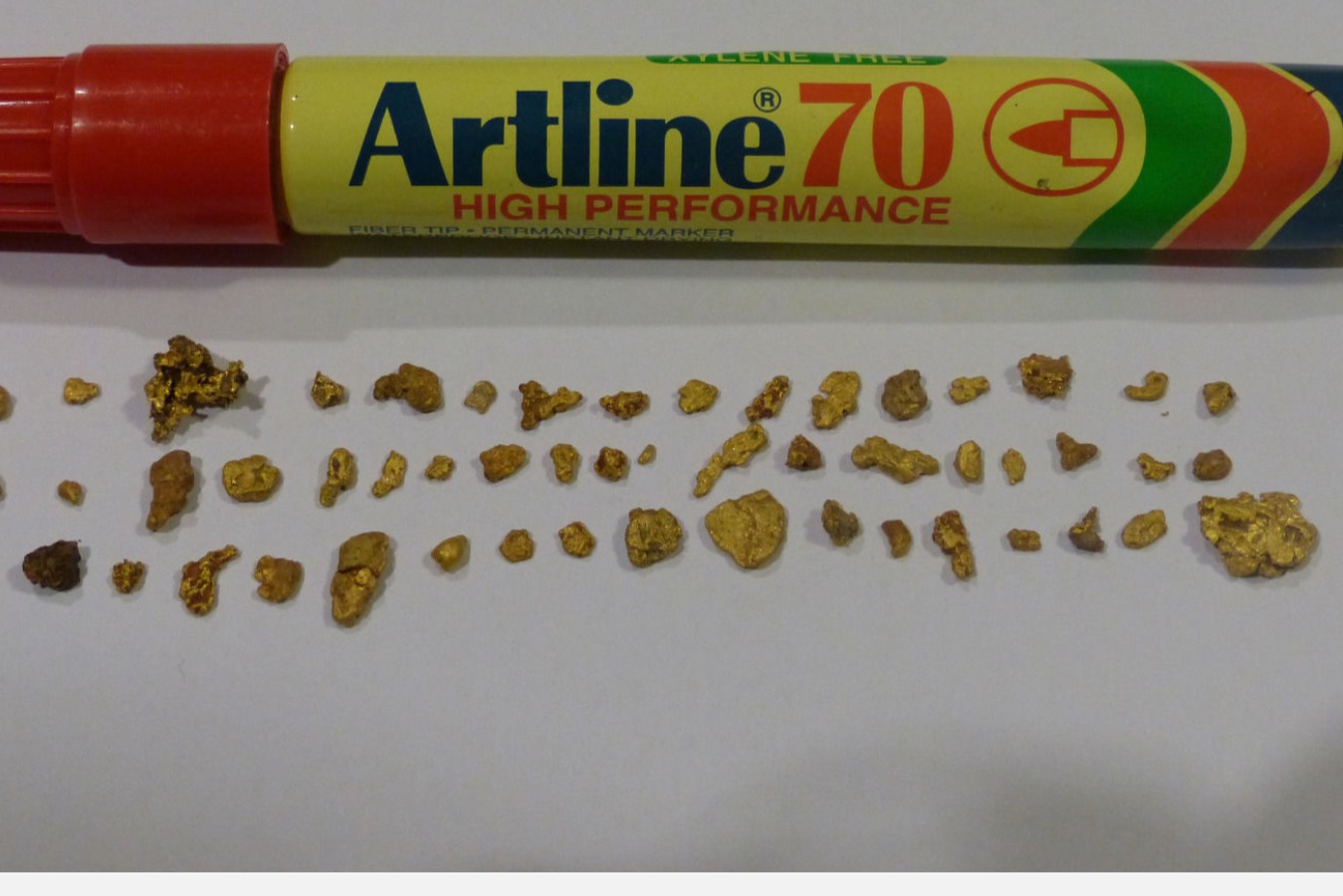
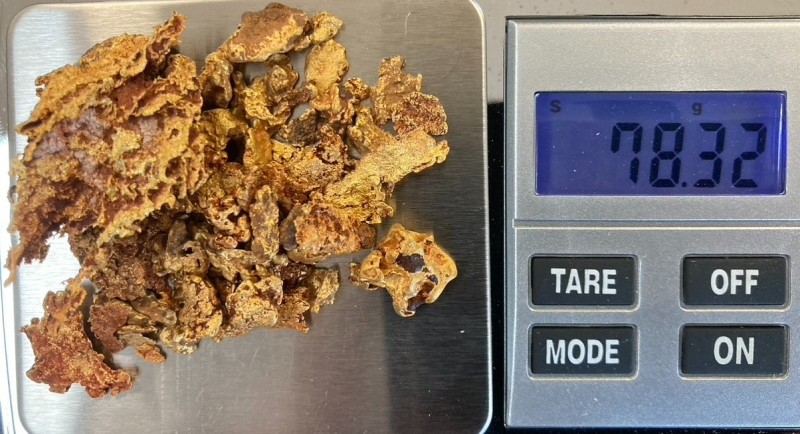
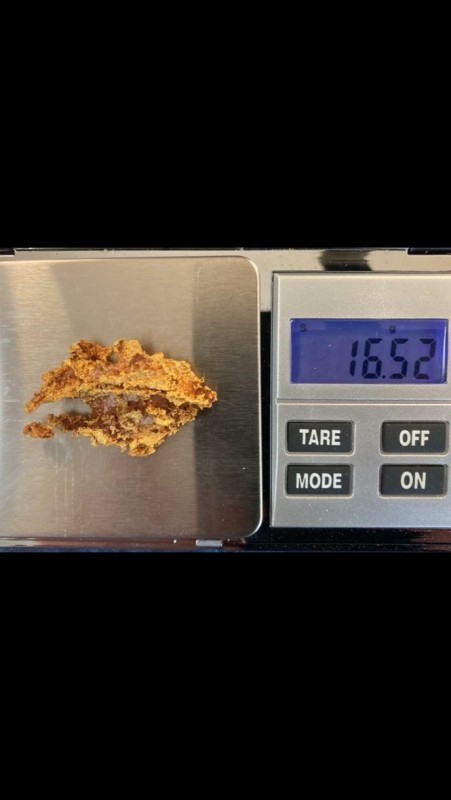
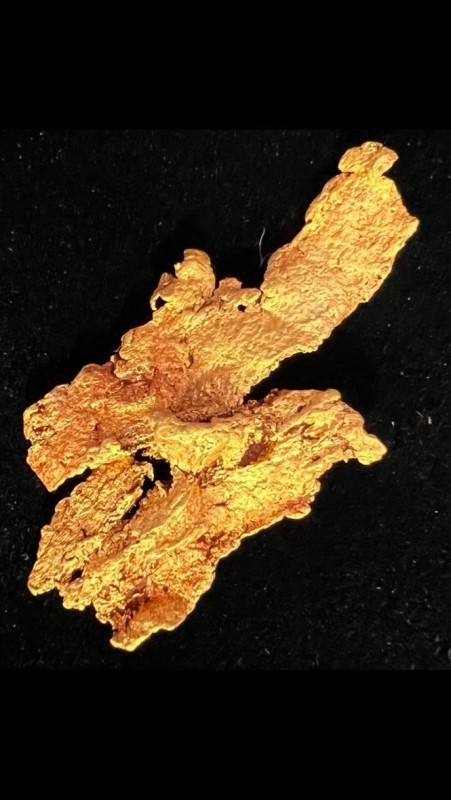
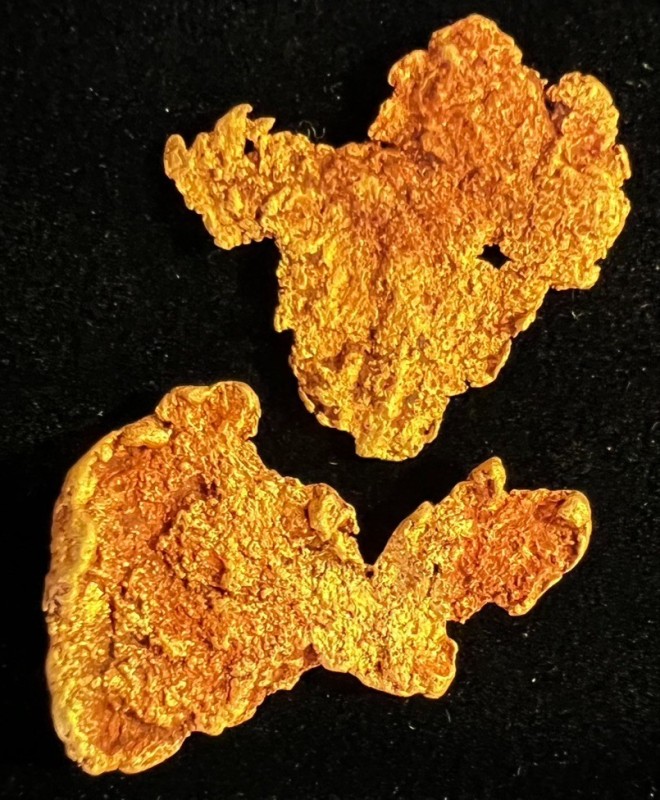
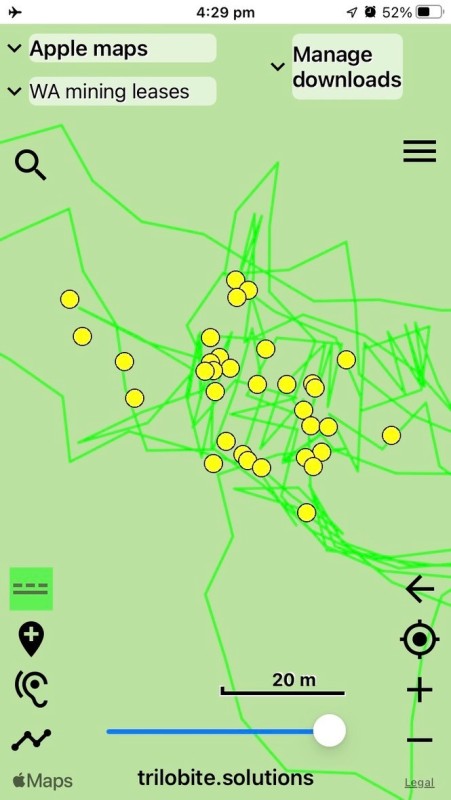
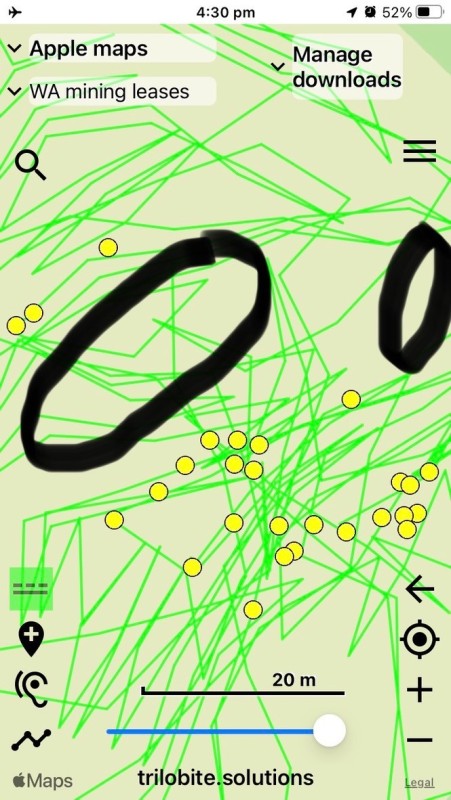
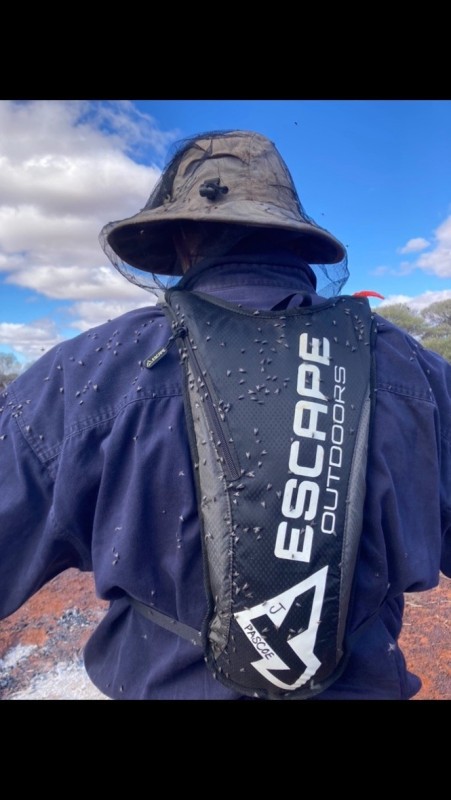
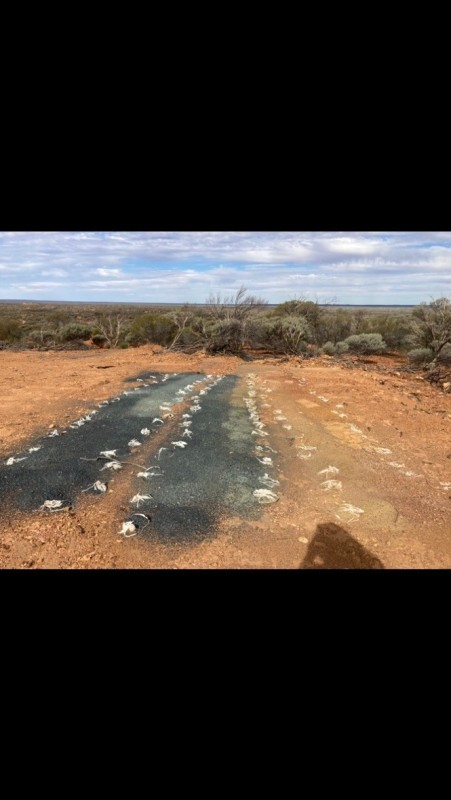
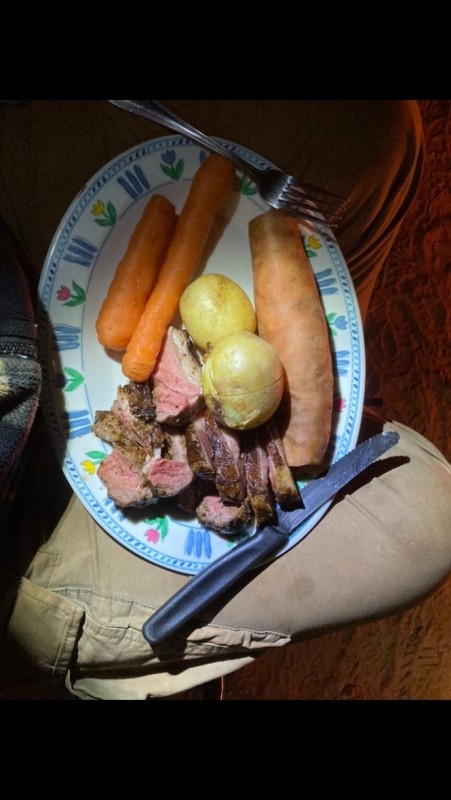
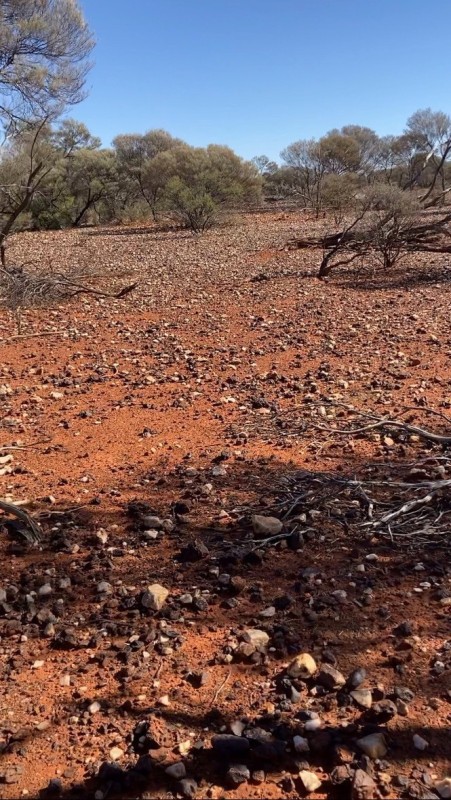
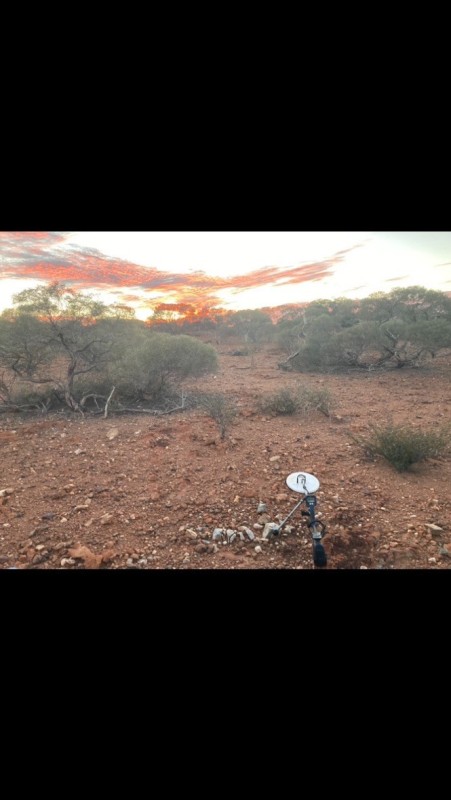
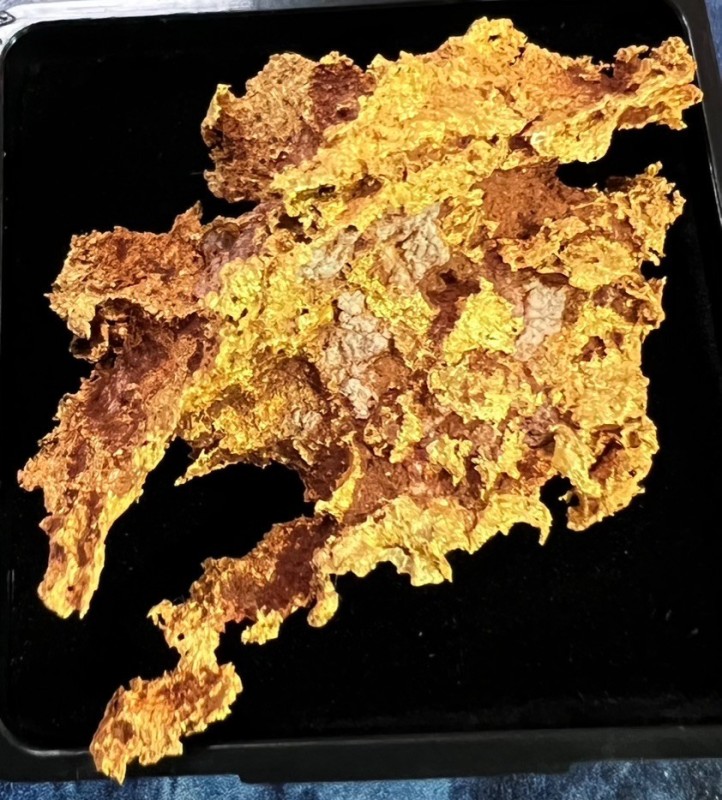
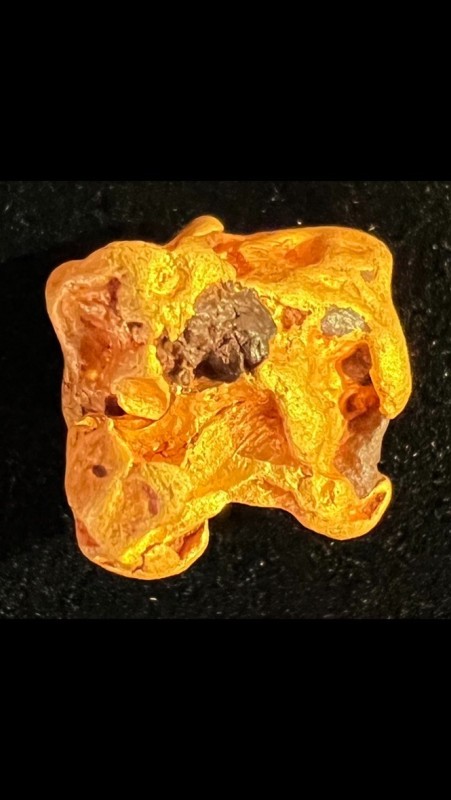
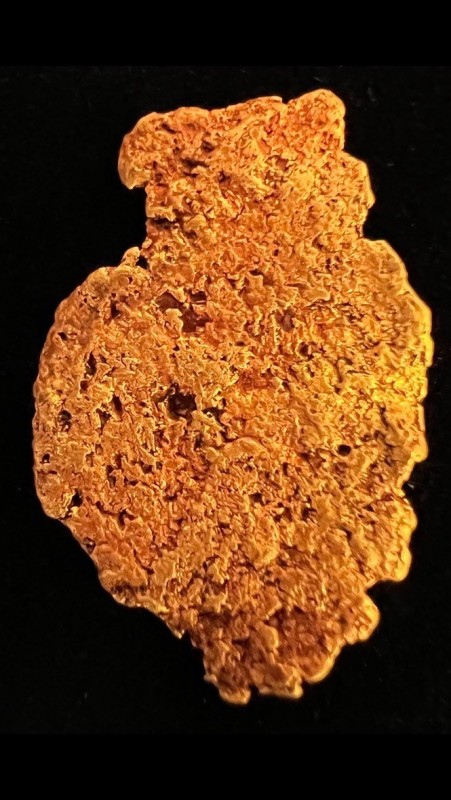
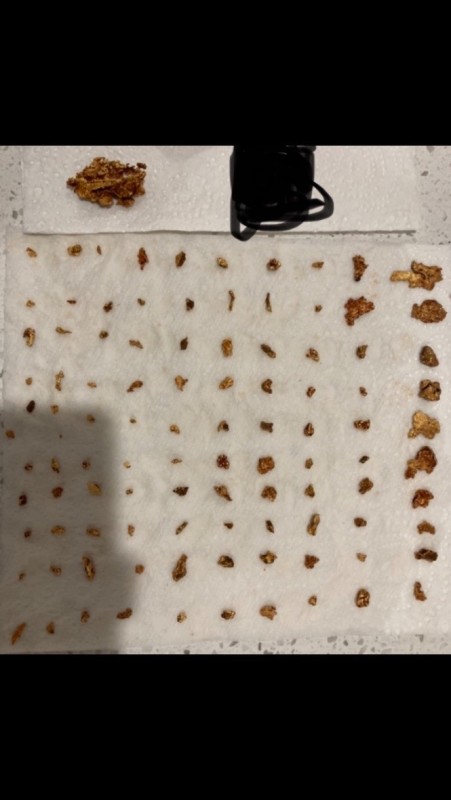
22" GPZ X Coil Concentric Results
in Minelab Metal Detectors
Posted
Looks like drag coil country to me 😉